Posts Tagged ‘computer’
Wednesday, June 23rd, 2010
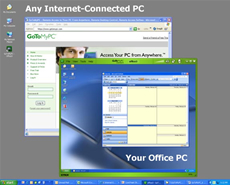 As seen at https://www.gotomypc.com/corp/technology.tmpl June 2010 Hey, everyone. It’s Josh from Computer Fitness again. We are a Tech Support Company for Small and Medium businesses located in Reisterstown, MD.
As we’ve talked about on one of our other blogs, remote use of a computer is a growing trend in today’s IT world. The article, located here, talks about some of the reasons why using RDC is a great idea. Here at Computer Fitness, we’re going to take a look at how to get this up and running on your home machine.
I’m going to assume that you’re using Windows for this part. Mac OS comes next. First, open up your Start menu. Next, you want to right click on My Computer. Next, click Manage. This will bring up a new screen with a lot of details about your computer. If you are using Windows XP, which a lot you probably are, you’ll see a tab labeled Remote.
On the Remote tab, there are two check boxes. The one you want to check here is under Remote Desktop and labeled “Allow Users to Connect Remotely to this Computer”. This computer can now be accessed remotely. If you want to add users that are allowed to use this privilege, which I recommend, just click the box labeled Select Remote Users. That will keep a tight control on the people using it.
Now, for Mac Users. This is pretty easy. Open up your System Preferences. Now, click on Sharing. Once that loads, you will see a number of options for sharing. Things like File Sharing will likely already enabled. You want to check the box labeled “Remote Management”. Once you do, you will be presented with a list of options for users taking control of the system. This provides granular control over users. This way, even if someone gets into your system, you still have some control if you aren’t there. Check the appropriate boxes and hit okay. As with Windows, you can select certain users to give access.
-Josh
Computer Fitness
Onsite and Remote Tech Support

Tags: computer, control, mac, pc, remote, sharing, tech support, users
Posted in Desktop - Workstation, Mac and PC | No Comments »
Thursday, June 3rd, 2010
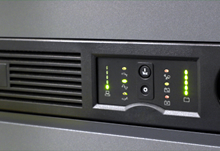 Hello and welcome to Computer Fitness’ Blog! My name is Josh. Computer Fitness is a tech support firm for small and medium businesses in Reisterstown, MD. Our areas of expertise run the gamut from workstation repair to server maintenance. Hello and welcome to Computer Fitness’ Blog! My name is Josh. Computer Fitness is a tech support firm for small and medium businesses in Reisterstown, MD. Our areas of expertise run the gamut from workstation repair to server maintenance.
Let me begin by explaining what a UPS is. First, it has nothing to do with the shipping company. A UPS, in computing terms, stands for Uninterruptible Power Supply. Essentially, this is a battery backup for your electronic devices. You may not think you need one of these, but here are some reasons why you actually do.
First, just from a personal computing level, a UPS will keep your PC from suffering damage if the power goes out. The big concern here is the hard drive. When you access data on a hard drive, there are plates on the inside that spin. If your computer gets shut down suddenly, the plates, which are read by a needle of sorts, can become scratched. If that happens, kiss your hard drive goodbye.
Second, a UPS can keep your network infrastructure from suffering damage. When the power goes out, things like backups and programs that run over your company’s LAN could get wiped out. They may not get deleted, but the loss of data could be devastating. You won’t have time to save progress at all. Therefore, having a UPS for vital systems is very important.
Lastly, a UPS will keep you from suffering electrical surges. Any good UPS will make sure to have surge protection in there. Sometimes, they even come with a warranty for technology attached to them. The damage you might sustain from a power surge could cost thousands upon thousands of dollars in damage. A simple preparatory step can save a lot of headaches later.
Popular UPS Manufacturers:
APC, Belkin, CyberPower, Tripp Lite, Ultra
That’s all for this week. Come back next week for more computer fitness tips!
-Josh
Computer Fitness
Onsite and Remote Tech Support

Tags: computer, power, supply, uninterruptible, Uninterruptible Power Supply, ups
Posted in Fault Tolerance, Uninterruptible Power Supply | No Comments »
Thursday, May 20th, 2010
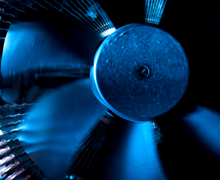 Hello and welcome to Computer Fitness’ Blog! My name is Josh. You may know me from the Internet Beacon. We have a pretty cool blog over there. If you’re new to our sites, do check it out; there’s plenty more awesome over there. Computer Fitness is a tech support firm in Finksburg, MD. Our areas of expertise run the gamut from workstation repair to server maintenance. Hello and welcome to Computer Fitness’ Blog! My name is Josh. You may know me from the Internet Beacon. We have a pretty cool blog over there. If you’re new to our sites, do check it out; there’s plenty more awesome over there. Computer Fitness is a tech support firm in Finksburg, MD. Our areas of expertise run the gamut from workstation repair to server maintenance.
For the most part, we all take pretty good care of our computers. We make sure the screens are free of spots, sometimes wipe down the keyboard and mouse, and generally make sure we don’t spill coffee in that cup holder thing that comes out of it. However, there may be a vital area you are missing in your attempts to keep your system clean: the inside. I know what you’re thinking, “Why would the inside of my computer be dirty? It’s not like I open it.” Well, that’s a logical assumption. However, it’s incorrect.
The best way to keep your computer cool while it’s working hard while you’re working hard…or playing games on your desk…is through fans strategically placed on the case. They are located at different places on most laptops, but desktops are our focus today. As with all fans, they exchange air at a rapid rate to keep things cool. Because of this, dust builds up. And unbeknownst to you, inside of your computer case could be the secret location of every dust bunny ever conceived by human clutter. Fear not, you can prevent this.
Opening your PC case is not something I recommend if you have an IT department or even an IT guy/gal at your work. They will not want you opening your case for a myriad of reasons. This is for your home PC. If you have permission from your IT people, then feel free to do this at work, too. However, please don’t assume you can open it up. This has caused many headaches for techs all over the world. Also, and this is important, TURN THE COMPUTER OFF BEFORE PROCEEDING. Sorry, I got carried away for a second.
Anyway, to open your case, most computers have two screws on the back side of the case. They are often big enough for your thumbs to turn, and they will let you open up your computer. Inside, you may either find a pristine Eden or a dust-covered wasteland…or somewhere in between. If it leans more towards the latter, then grab a can of compressed air and lightly spray the area inside to get the dust out. Make sure to read the back of the can to use it properly. Also, pay attention to the fans, as they may have some build-up from keeping your PC cool while you play Quake at 3 AM.
Once you’re finished, just close the case back up and turn on the machine. You shouldn’t have any problems and you may even notice the disappearance of some minor background noise from your machine, though this is not guaranteed. That’s all for now. Your PC should be as clean inside as outside, so make sure to perform this maintenance once every few months.
-Josh
Computer Fitness
Onsite and Remote Tech Support

Tags: case, computer, inside, pc, pc case
Posted in Desktop - Workstation, Hardware Overview | No Comments »
Thursday, May 13th, 2010
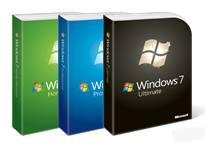 Retail box Microsoft Windows 7: Home, Professional, and Ultimate Hello and welcome to Computer Fitness’ Blog! My name is Josh. You may know me from the Internet Beacon. We have a pretty cool blog over there. If you’re new to our sites, do check it out; there’s plenty more awesome over there. Computer Fitness is a tech support firm in Finksburg, MD. Our areas of expertise run the gamut from workstation repair to server maintenance.
Windows 7 is, in my opinion, the best Microsoft OS (operating system) yet. While it may look similar to Vista in some respects, the functionality and overall operability of Windows 7 is miles ahead of its forerunners. Given that all new machines are shipping with Windows 7, I though it appropriate to go over some neat tips and tricks for the OS. Some are cosmetic and some are functional.
Resizing Windows
I know the ability to change the size of a window to your liking is nothing new. In fact, it’s been around since, I believe, Windows 3.1. However, Microsoft introduced a rather cool new feature that automatically resizes them for you with either a mouse gesture or a keyboard shortcut. With this feature, you can either drag the window you want resized to a side of the screen or you can press the Windows key and the direction you want it go. By doing this, the window will take up whatever half of the screen it’s been sent to, allowing you to manage your desktop space even better than before!
Program Stacking in the Task Bar
It’s no secret that those of us who run a lot of programs on our PCs have our task bar filled up pretty quickly. Before you know it, it’s cluttered with a thousand and one Internet Explorer windows and you can never remember which one has what you really want on it. To remedy this, Microsoft changed the task bar. Now, instead of seeing a rectangle with the name of the program running, you see the icon with an illusion of stacking. That way, if you have multiple instances of the same program running, you can mouse over and see a preview of all the windows it uses. This makes it easier to get around your PC, and provides a cleaner look.
All in all, Windows 7 has added a lot of cool features, both behind the scenes and on the user interface. I highly recommend it for anyone looking to upgrade. NOTE: You cannot upgrade from XP to Win7. You will have to format your hard drive and then do a clean install. If you are unfamiliar with this, please consult an IT professional before beginning.
That’s all for this week! We’ll see you back next time for more Computer Fitness tips.
-Josh
Computer Fitness
Onsite and Remote Tech Support

Tags: computer, microsoft, task bar, tech support, Windows, Windows 7
Posted in Desktop - Workstation | No Comments »
Thursday, April 8th, 2010
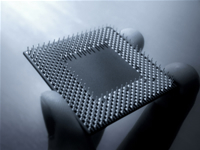 Hello and welcome to Computer Fitness’ Blog! My name is Josh. You may know me from the Internet Beacon. We have a pretty cool blog over there. If you’re new to our sites, do check it out; there’s plenty more awesome over there. Computer Fitness is a tech support firm in Finksburg, MD. Our areas of expertise run the gamut from desktop repair to server maintenance. This week I’d like to talk about processors. Hello and welcome to Computer Fitness’ Blog! My name is Josh. You may know me from the Internet Beacon. We have a pretty cool blog over there. If you’re new to our sites, do check it out; there’s plenty more awesome over there. Computer Fitness is a tech support firm in Finksburg, MD. Our areas of expertise run the gamut from desktop repair to server maintenance. This week I’d like to talk about processors.
Sure, it sounds cool, but does it really benefit you? Companies love to tout the latest and greatest technological advances. They tell you that you need their products and that without them, your computer will be drastically slower. This is partially true. Yes, these processors can be considerably faster, but only in specific circumstances. The number of cores on a processor really reflects how much it can do and the amount of processors on the chip. For example, a quad-core processor has four processors on one chip.
This means it can do drastically more than an older, singe core processor. However, the biggest bonuses will be noticed in programs that are designed to take advantage of these processors. A great example of this is new operating systems for Apple and Microsoft. Windows 7 and Mac OS 10.6 (Snow Leopard) operate in what is called “64-bit” mode. This means that the amount of memory they use is greater, but it affords faster processing.
At the end of the day, you need to determine if you really need the processing power these chips offer. In my off time, I play games on my PC, so getting a faster processor for the latest games makes sense to me. However, if you are simply doing word processing and basic Internet use, then paying for this extra perk is not worth it.
Well, that’s all I have for you this week. Thanks for stopping by.
-Josh
Computer Fitness
Onsite and Remote Tech Support

Tags: computer, faster, processing, processor, Processors
Posted in Desktop - Workstation, Hardware Overview | No Comments »
Saturday, March 27th, 2010
 Hello and welcome to Computer Fitness’ Blog! My name is Josh. You may know me from the Internet Beacon. We have a pretty cool blog over there. If you’re new to our sites, do check it out; there’s plenty more awesome over there. Computer Fitness is a tech support firm in Finksburg, MD. Our areas of expertise run the gamut from desktop repair to server maintenance. This week I’d like to talk about RAM. Hello and welcome to Computer Fitness’ Blog! My name is Josh. You may know me from the Internet Beacon. We have a pretty cool blog over there. If you’re new to our sites, do check it out; there’s plenty more awesome over there. Computer Fitness is a tech support firm in Finksburg, MD. Our areas of expertise run the gamut from desktop repair to server maintenance. This week I’d like to talk about RAM.
Now, most people know what RAM does. If you don’t, here’s a quick rundown. RAM stands for Random Access Memory. Computer programs will take a chunk of it to run a program and then return it when they are finished. This is different from your Hard Drive, which stores data more or less permanently until you say otherwise.
Getting back to RAM, the more the better is generally true. However, there are cases when this may not be exactly true. While increasing the amount of RAM in your computer is almost always good, there are rules. There are two things I would like to caution users to take into account when purchasing RAM.
Teamwork is Key
RAM works best in pairs. When your PC/MAC uses RAM, it runs quicker and smoother when the amount of RAM you have is based on two similar chips. In essence, if you have 1 GB of RAM, you’re best speeds will come out of a pairing of two 512 MB chips. This rule applies as you increase the memory.
Ask Your Mother
Your motherboard, or Mainboard, is like the nervous system/brain of your computer, in that it deals with everything attached to the computer. What you want to take into account here is the maximum possible RAM that it can support. No technology is without limitations, and planning for the future is important. When ordering/building a new PC, check the maximum amount of RAM supported by the Motherboard.
If it is only twice what is currently in the PC, you may find yourself buying a new computer in 2-3 years rather than 5-6. The best part of desktop computers is the ease of upgrading. By not checking the computer’s limitations, you could end up spending a great deal more money than necessary.
Well, that’s all for this week. Come back next week for more tech tips!
-Josh
ComputerFitness.com
Baltimore Tech Support

Tags: computer, pc, RAM, support, tech support
Posted in Hardware Overview | 1 Comment »
|










 Hello and welcome to
Hello and welcome to 

